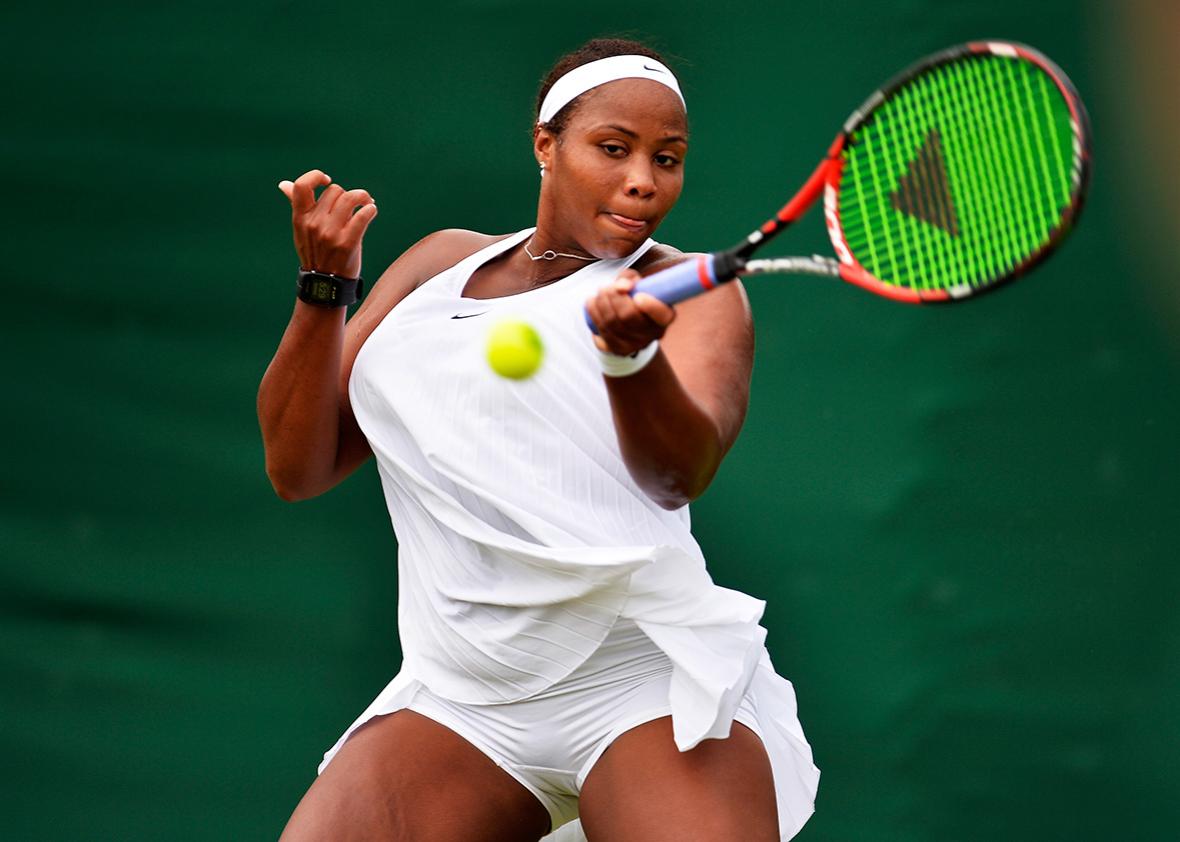All the moisture wicking in the world couldn’t save Nike’s Wimbledon dress. The slip-like getup, designed for women paid to play in the brand’s clothing, would be a cute, comfortable piece of clothing if it were a nightgown—but as a tennis outfit, it bombs in both form and function.
A New York Times evaluation of the baggy, crotch-length dress found tennis stars saying things like “when I was serving, it was coming up, and I felt like the dress was just everywhere”; “it was always going up, so you can see the stomach, everything”; and “I didn’t feel comfortable showing that much.” One coach said his player was too cold in the sheer, sleeveless number, and she kept accidentally grabbing the loose folds of fabric when she reached to hold her racket with both hands.
I’m no Wimbledon champ, but I’ve got a hunch that this dress fails to meet the one and only inarguable mandate of athletic wear: Don’t distract or hamper the athlete. It definitely falls short of the selling point of much high-end gear designed for athletes with endorsement deals: Make the player’s game better. A billowing babydoll dress seems more suitable for a pop superstar prancing about New York Fashion Week in Louboutins than for any feat of athletic greatness.
Nike hyped the “NikeCourt Premier Slam Dress” in a pre-Wimbledon press release, boasting of its “traditional aesthetic” and “power pleats,” the latter of which the company claimed “enable the athlete’s movement.” But even after a mandatory alteration—Nike called in all the players and sewed up the waist-high slits on the sides of their dresses to control the flapping fabric a bit—several women decided to modify the outfit on their own. One wore a shirt over the dress so it wouldn’t fly up; another tightened a headband around the midsection; a third covered her bottom half with capris so the dress functioned as a tank top.
But why all the fuss over this floaty minigown when all skirts and dresses fly up and around during athletic activity, revealing shorts or underwear? Nike’s attempt at an ethereal A-shirt is a particularly egregious example of a style that’s been an impractical staple of women’s tennis for decades. In a 2001 Slate piece, Eliza Truitt wondered why female tennis players still, after all these years, compete in skirts:
Unlike ice skaters … tennis players are not scored on how they look, so they can’t claim they are captive to judges’ preferences. And women don’t wear them because skirts are more comfortable or conducive to better play; if that were the case, male tennis players looking for a competitive edge would have adopted skirts, too. (If you doubt this, consider that male athletes shave their legs and don body stockings for swimming.) Plus, pro women usually wear shorts for tennis practice.
Truitt came to the conclusion that “giving a little panty flash now and then” is one way for women to boost their star status and endorsement value in a celebrity market that sells women’s bodies as much as their talent. In tennis, the commodification of women’s bodies goes beyond the wardrobe prescribed by their associated brands. The Women’s Tennis Association tried to keep its players delicate and decorous by banning grunting—so sexual! so distracting!—in women’s games. Even though Taylor Townsend attended a tennis academy sponsored by the United States Tennis Association, the USTA backed out of paying for her run in the U.S. Open’s 2012 teen tournament because she wasn’t slim enough. Female tennis players who aren’t willowy and lean are still suspected of steroid use or called manly if their bodies look too strong. And crusty old leaders of the sport still think women in tennis don’t deserve the kind of money and fame the male superstars get, chalking women’s success up to their looks.
And yet, against a constant battering of sexist stereotypes and leadership, women’s tennis has produced the goddess that is Serena Williams, widely considered by many the greatest athlete in the nation, and a plenty of other magnificent, world-class athletes. Imagine how they’d fare in shorts.
